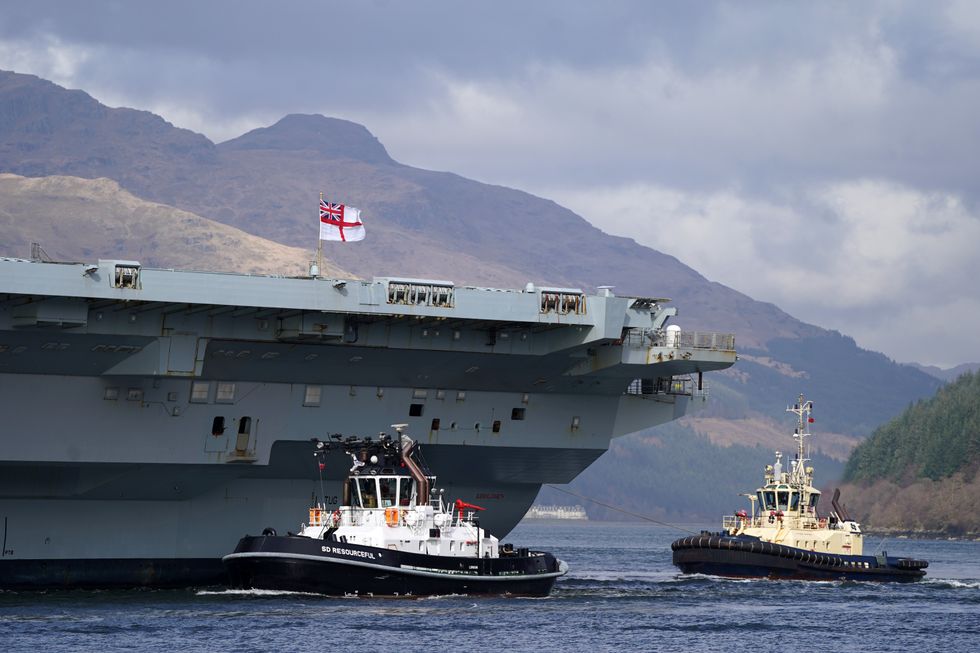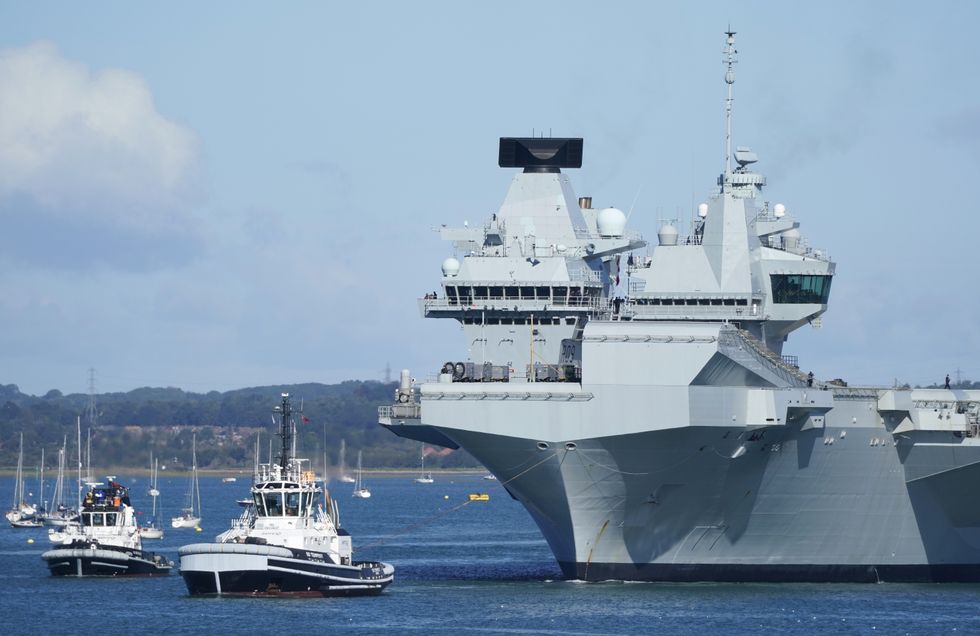Royal Navy’s weak link revealed as war games lay bare fatal flaw in Britain's fleet
Together, HMS Queen Elizabeth and HMS Prince of Wales cost £6.2billion
Don't Miss
Most Read
The Royal Navy’s weak link has been revealed as simulation war games have brought the British fleet’s fatal flaw to light.
Speaking on the US podcast series The Shawn Ryan Show, Donald Trump’s pick for defence secretary, Pete Hegseth, claimed that in simulations of the American fleet against China, "we lose every time" and questioned the viability of the country's aircraft carriers.
With China's surge in production of hypersonic missiles, Hegseth claimed just 15 missiles could destroy 10 carriers in the first 20 minutes of a conflict.
However, his comments sparked further questions about vulnerabilities in Britain's fleet, particularly surrounding HMS Queen Elizabeth and HMS Prince of Wales - commissioned in 2017 and 2019 - and costing £6.2billion.
"In most war games, the carriers get sunk," said one source, told The Times, adding that the ships were especially vulnerable to missiles.
Another source said that the British military "ran a whole load of scenarios" during secret war games where the Navy’s "ability to survive" was pushed to its limits by an "overwhelming force".

A source from the British military said that the carrier would eventually get sunk as the crew is pushed to the absolute limit
|PA
They said: "We stretch everything to the limit. At some point you will get to a scenario where it [the carrier] is sunk."
Director of military sciences at the Royal United Services Institute Matthew Savill said that it was much easier to "locate and track" these carriers due to the speed at which missile technology was evolving.
It is understood that scrapping at least one of the costly carriers is under consideration by Ministry of Defence and Treasury officials.
While the Treasury searches for funding in every crevice of Whitehall, a senior defence source has said: "There will be casualties."
LATEST DEVELOPMENTS:
This decision has come amid discussions surrounding whether the carriers are fit for purpose within the world of modern warfare, as other nations have seriously accelerated their military technology.
Frontrunner Beijing is in the process of increasing the range of its anti-ship ballistic missiles, as well as its supersonic anti-ship cruise missiles and long-range “over the horizon” radars to recognise hostile ships.
The DF-17 - China’s hypersonic glide vehicle - was created to target foreign fleets in the western Pacific, while experts have deemed it to pose a significant threat to the US and its allies.
However, a former First Sea Lord, Lord West of Spithead, has said that aircraft were the "least vulnerable military assets" - apart from nuclear subs - since they can travel long distances and are capable of obscuring themselves effectively by sending out fake transmissions.

Currently, America has 11 aircraft carriers, while France has one, and China has three
|PA
"This is one of the most significant things we give to Nato," he said.
"If carriers are so useless, why are the Chinese, Americans and Indians desperately building up their carrier forces?"
Currently, America has 11 aircraft carriers, while France has one, and China has three.
A Royal Navy spokesperson has said: "Our carriers are among the very best in the world and are protected by the latest cutting-edge defence systems and capabilities."
She added: "These are worst-case fictitious scenarios that push our capabilities to the very limits — they are not forecast of what is most likely to happen."
"This ensures we remain fully prepared for all future potential threats and can continue to keep the UK safe at home and strong abroad."











